WHAT IS MOISSANITE? IS IT A DIAMOND?
MOISSANITE VS DIAMOND! COMPARING MOISSANITE THE OTHER DIAMOND
This post contains affiliate links. If you use these links to buy something I may earn a commission. Thanks! As an Amazon Associate I also earn from qualifying purchases.
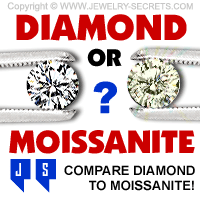
Moissanite is simply a man-made diamond look-a-like.
The first time I ever encountered moissanite was about 5 years ago. A customer brought in their “diamond” engagement ring to sell.
I remember the jeweler louping the ring carefully and testing the stone with a diamond tester. It tested as “diamond”, but the jeweler was not so convinced.
He kept looking at it from all different angles, even upside down.
The stone just didn’t look right.
The optical properties were different, the color was off, the way the stone handled light was odd. He showed the stone to the other jewelers which was followed by confusion, discussions and opinions.
The outcome:
“This is not a diamond!”
Even though the tester said it was, they didn’t buy it (I don’t even know if the customers knew what it really was). Shocking!
It was later determined that the stone in question was in fact, a moissanite.
The “new” diamond.
Fake? Yes! Fooling? Yes!
Think CZ, cubic zirconia… but more durable.
So what is moissanite?
Moissanite is actually a natural, genuine stone that is so rare in nature that only a few small pieces exist. First discovered in canyon Diablo in a meteorite in 1893 by one Dr. Henri Moissan, who at the time mistook the stone for diamond. It was found later to be a new mineral similar to diamond, but at the same time, drastically different in many, many ways.
Let’s get a couple of things straight about moissanite…
Moissanite is not a diamond!!!
Moissanite is not even a diamond substitute. Nor a brand name for a diamond.
Moissanite is a genuine stone, but so rare that it can’t even be used for jewelry (that’s where created moissanite steps in). Moissanite is made of silicon carbide (SiC) (diamond is made of 100% pure carbon). Moissanite on the Mohs scale of hardness is 9.25 (diamond is a 10. Sapphire and ruby is a 9).
So that’s a very good thing. Moissanite (some say moissonite) is a very tough and durable gem. It will hold up well and last you a lifetime. But…
What are the other differences between moissanite and a diamond?
The differences between moissanite and diamond are plenty…
Keep in mind, when we’re talking about moissanite, we’re actually talking about the created man-made moissanites that you see on the market today. Not the genuine stone found in nature.
The moissanite in today’s jewelry is created by a company named Cree Research. In the late 1990’s they came up with the formula to almost perfect the stone found in nature. Tiffany & Co. actually came up with the name.
But, while it may resemble a diamond in many ways, the chemical composition and optical properties are totally different.
Moissanites weight less than diamonds do.
They also give off more brilliance and fire (sparkles) than a diamond. 10% more brilliance (white light), and 150% more fire (colored light). That’s a lot of light.
So just looking at a moissanite stone, you’ll see it sparkling like crazy. Not necessarily a bad thing, but it is a big sign that it’s not a real diamond (think of a discoball’s flashing lights… Note that CZ’s also have more brilliance and sparkle than a diamond does).
Fewer inclusions:
Moissanites can be created with very few inclusions also. Which is awesome. They look clean, almost flawless (most man-made gemstones are), and if they were graded the same way that a diamond was, they would be in the VS clarity range. To the naked eye, they are clean, and even under a microscope or a 10x jeweler’s loupe you’d only see a couple of small imperfections or inclusions. Not too bad.
Moissanite color:
But let’s talk about color…
This is where moissanite falls short. The natural color of moissanite is green, yellow or grey. (Lovely) White is not an option (as of yet). No pure white moissanites have been created or perfected. The closest the laboratories can get to White is a near colorless color range like I-J-K. To me, you can always see a stark yellow cast to them.
They just appear darker and dirty.
So while the clarity may be there, the color isn’t. Light yellow stones just don’t look appealing, and they certainly don’t sell well. Diamonds rule in this aspect.
So all in all, man-made created moissanites have come a long way since their initial discovery about a century ago. They are durable, heat resistant, and resemble a genuine diamond in many regards. They even sparkle more than a diamond, cost way less, and are very clean of any imperfections…
But should you buy moissanite versus diamond?
The worst things about moissanites are the yellow hue, and of course the fact that they’re man-made.
Those are two very big reasons to hesitate before buying them.
Fluorescence:
Most moissanites also have a distinct fluorescence cast to them (weird display of light, that tends to look foggy, and most glow-in-the-dark). And when viewed under a microscope or jeweler’s loupe, the lines, facets, refraction and reflection will create a doubling effect (blurry and doubled like when you squint your eyes). Not so good.
So while moissanite may fool some people, and confuse many jewelers, newer diamond testers can now determine the difference between a moissanite and a diamond due to its different thermal conductivity. They still don’t bode well in the jewelry industry or the market yet. It generates heated conversations.
Disclosure:
Jewelers selling moissanite have to disclose the fact that it’s moissanite, and most jewelers don’t even want to carry moissanite for fear that customers may confuse it with their diamond selection. The two don’t mix well.
You may save tons of money buying moissanite over diamond (like these moissanites at Helzberg HERE) but in the long run, is it really worth it?
Resell values for Moissanites are slim to none. Very few people have even heard of moissanites and don’t really understand the purpose for them (many do really think it’s just a brand name for a diamond).
My thoughts are:
If moissanites resemble a diamond, but have weird optical properties and a yellow cast to them, then why not just buy diamond instead?
Nothing beats the beauty, shine and whiteness of a diamond. Nothing beats it’s symbolic meaning or desire. Nothing beats a diamond, period.
So is moissanite right for you? Only if price is your only objective.
Just don’t buy it as an engagement ring thinking “She’ll never know the difference“…
Trust me, she will.
Because moissanite is no substitute for diamond…
YET!
Check out some genuine diamond deals HERE at James Allen.
Update:
As of this initial post, 10 years ago, moissanites have come a long way. They are now available in white colors of D, E, and F. But the price has escalated as well. They used to be just 15% of a diamond’s worth, and now they have jumped up to 50-60% of what a real diamond sells for. I still can’t understand why someone would spend that kind of money for a fake stone, versus the real thing…
What are your comments on the subject?
I’d love to hear them below…
Cheers! :)




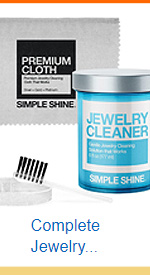
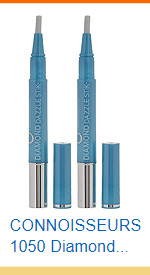
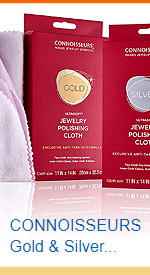
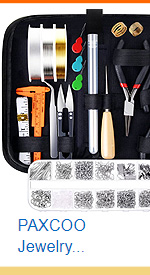
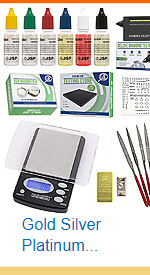

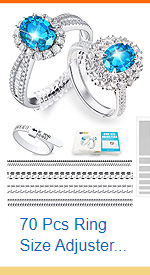
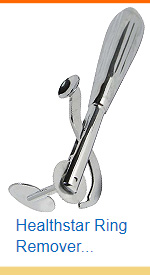
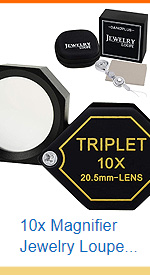





Yup. If you buy gems for investment, you don’t want to buy Moissanite. But you might not want to buy diamonds, either. The manufacturing processes for creating true man-made diamonds are getting better all the time (not to mention that the market is controlled by the deBeers cartel, so you’re the sucker at the table).
it will be an engagement ring and you already think about resell value… a little bit odd. It offers an alternative for people who cannot afford the insanely overpriced diamonds.
White moissanite in color d-f is now available. They are beautiful stones in their own right, in the best quality, and many of the colored stones are beautiful as well. The price is coming down now that the manufacturing patent has expired. The are eco-friendly. They are not diamonds. Buy them if you like them as long as you know what you are getting. Buy them for what they are.
Technology changes, and so do moissanites. :) -Richard
Thank you for the simplicity and easy to read education.
As diamonds are my birthstone and I simply cannot afford the size of the solitaire I would like to wear. I do have a boys night I think it is beautiful and I love it. I know it’s not a real diamonds but it is a beautiful size and the solitaire is absolutely gorgeous I understand your thoughts on it but if you can’t spend $50,000 on a ring you want then you don’t have to thank you
I have a heavy half carat 50s vintage diamond ring with a very clean stone with a barely noticeable cape. I love it. It’s been on my hand since 1982 and only comes off for cleaning. I was without it for a few days when the ring needed a 100,000 mile overhaul(Prong job). Do I want another diamond? No. They’re just too expensive and I could not afford one as nice as what I already have.
Now I like the looks of Moissanite and the moody tints it comes in. It’s really pretty stuff. It’s durability makes it very appealing. I have a very dark one that still exhibits fire. It’s a fun piece to wear. I enjoy it for its own merits.